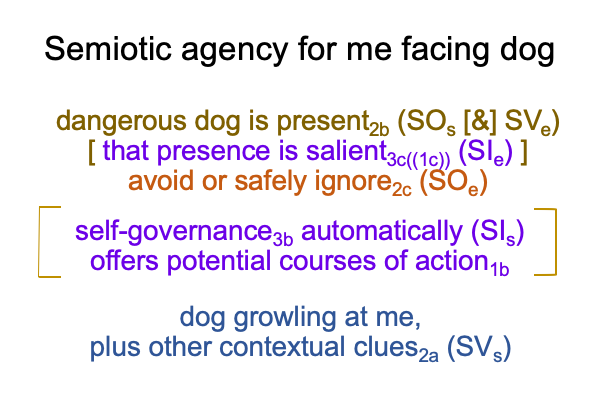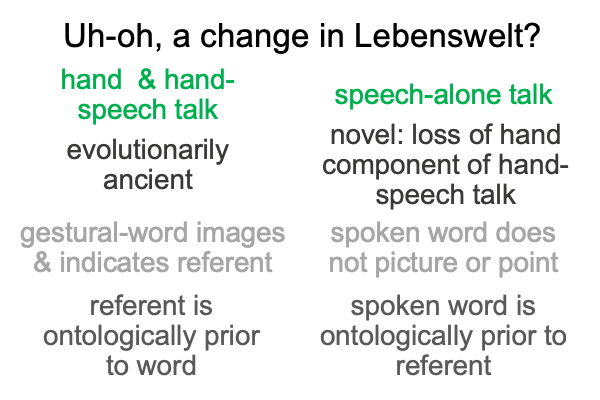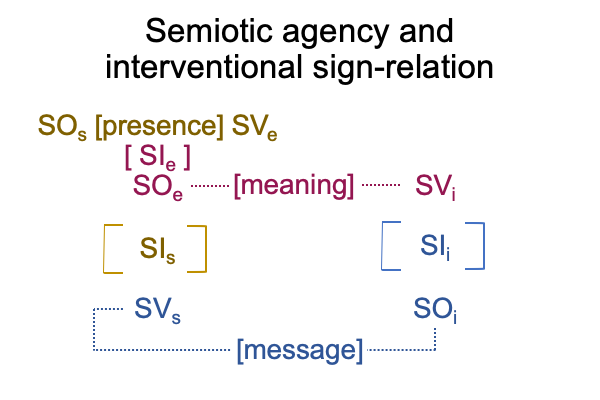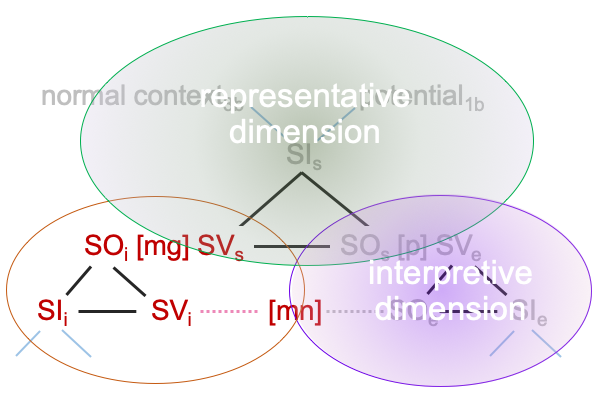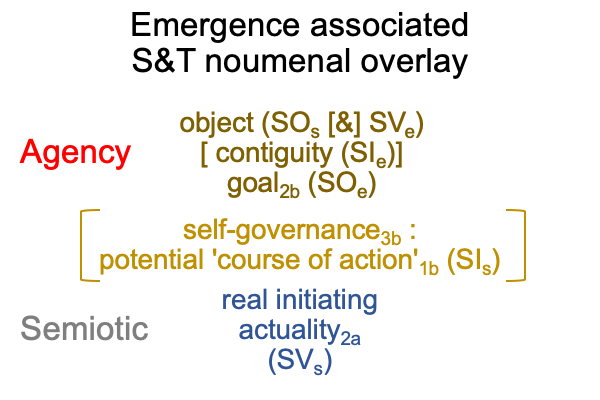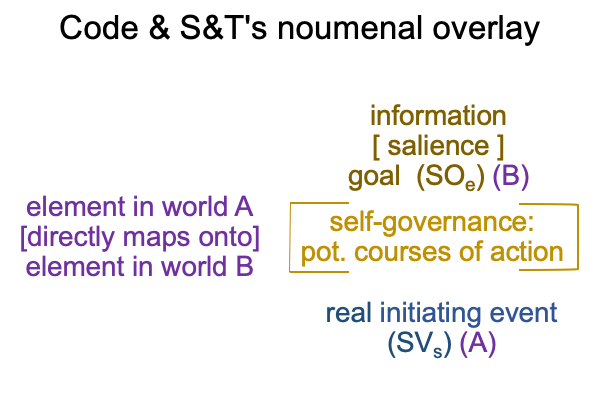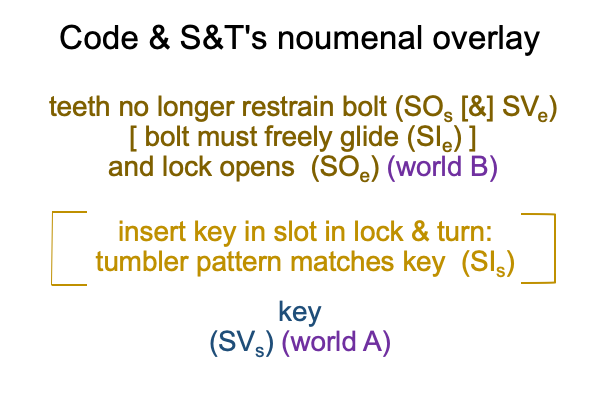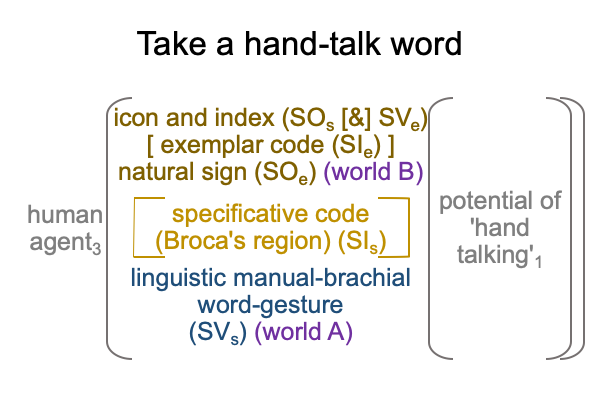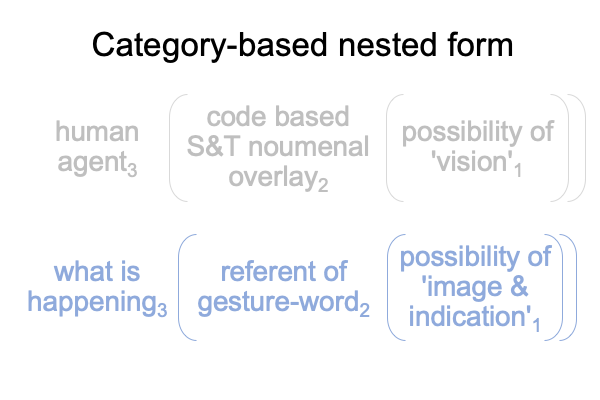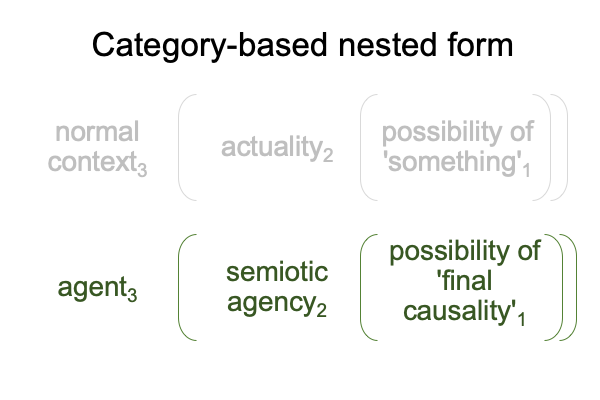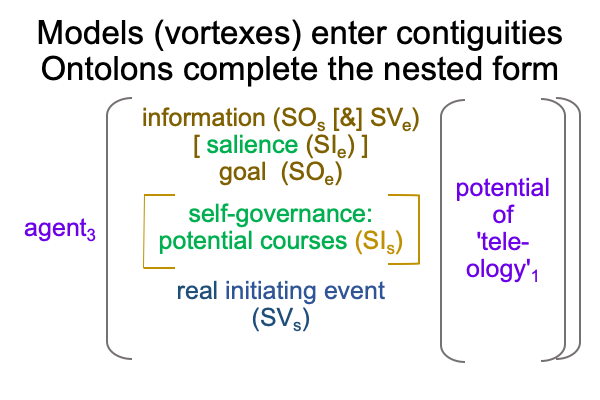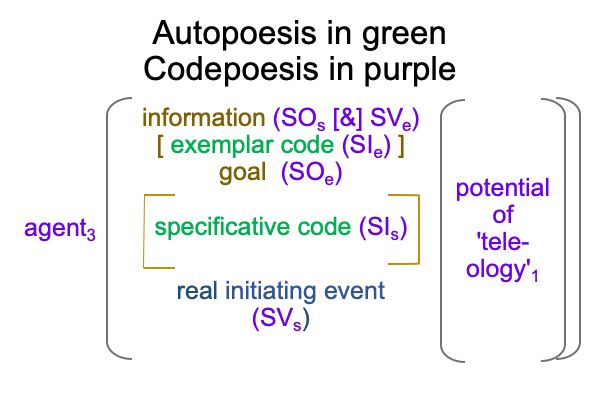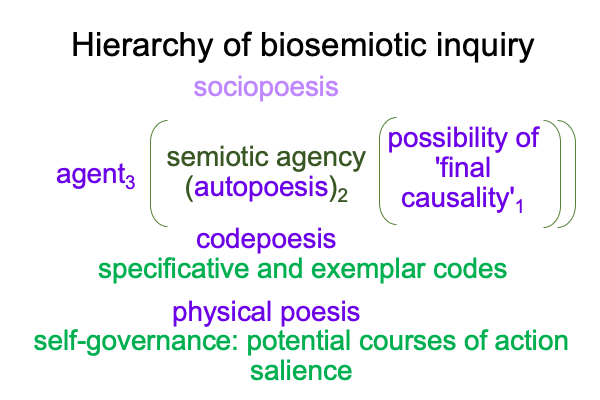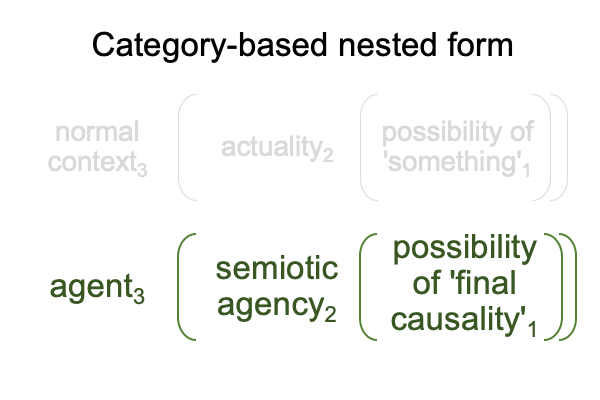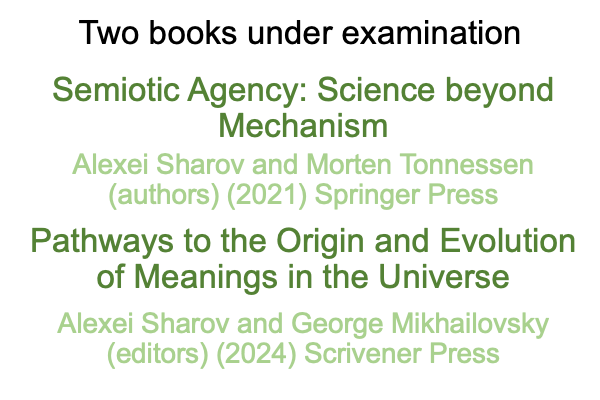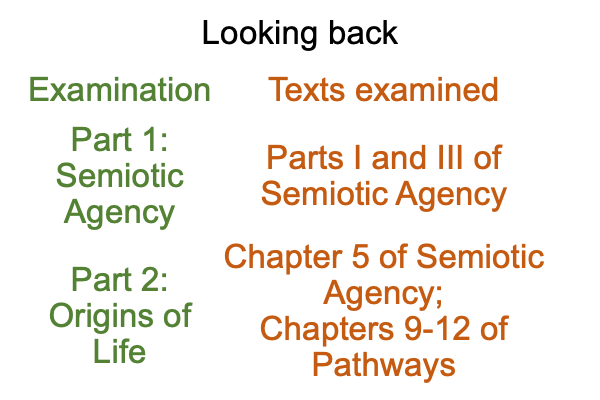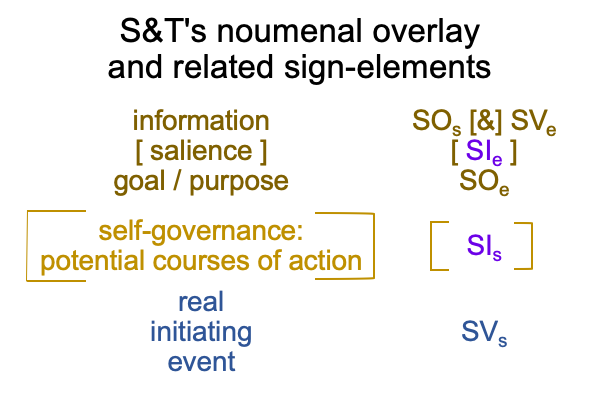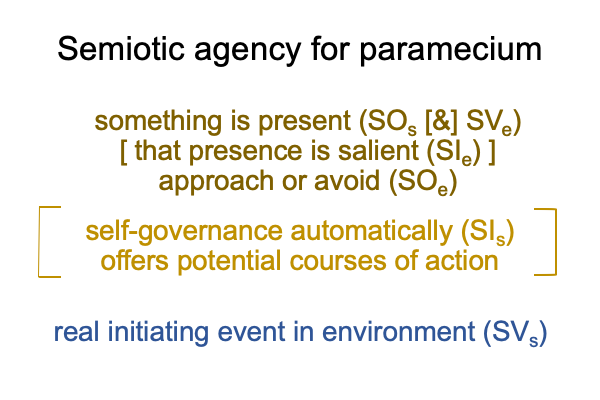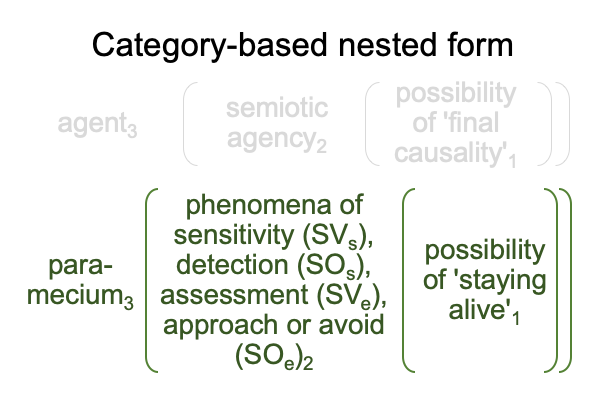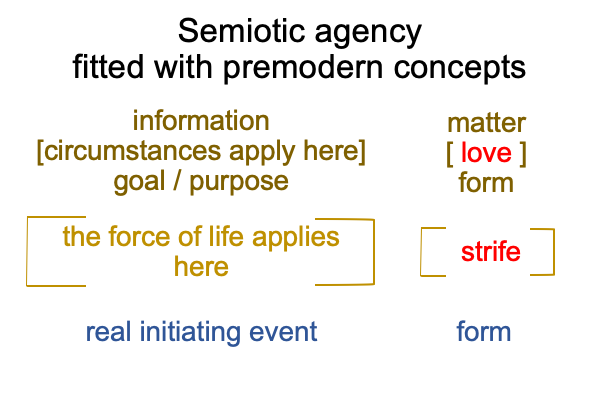Looking at Victoria Alexander’s Chapter (2024) “…The Emergence of Subjective Meaning” (Part 5 of 5)
0735 How is biology… er… NeoDarwinism… incomprehensible?
0736 First of all, neodarwinism is an intersection. An intersection contains contradictions that cannot be resolved. That is why intersections are mysteries. Philosophers can elucidate the contradictions, but they can never resolve them without cognitively reconfiguring the single actuality.
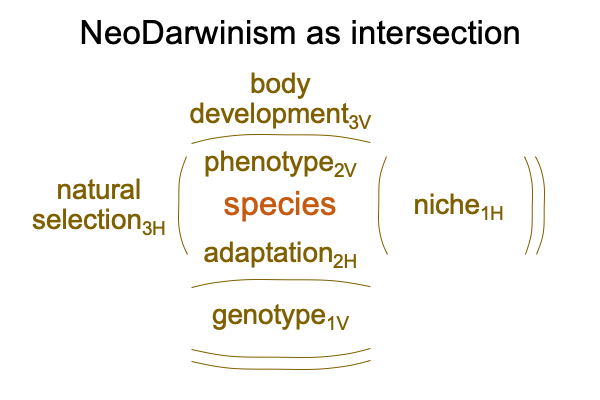
0737 For example, there are two major branches of evolutionary science. For the most part, natural historians ignore the vertical axis and geneticists ignore the horizontal axis. Everyone else ends up confusing niche1H and genotype1V as if these potentials1b situate “equivalent” actualities2a.
0738 The mystery within neodarwinism may be of interest to those concerned about mysteries.
After all, the Positivist’s judgment does not anticipate anything like this. How can terms for two radically different models for the origins of species simply be clapped together? I suppose that speech-alone talk can label anything, even mysteries… even, “neodarwinism”.
Well, “neo” is not exactly “genetic”.
Genodarwinism?
Perhaps, “neodarwinism” should be called out for what it is.
0739 Another reason why neodarwinism is incomprehensible is because the (hidden) content-level actualities2a do not have normal contexts3a and potentials1a. They are the foundations2a of situation-level potentials1b that support situation-level normal contexts3b (natural selection3b and body development3b). Does ecology and environment (as actualities independent of the adapting species)2a have anything to do with DNA2a (as the template for reproduction and cellular organization)?
I think not.
0740 So, how does one make biology… er, the evolution of subjective meaning on Earth… comprehensible?
This is the question that the author wrestles with.
The answer is in the title. It must have something to do with the operations of self-reinforcing cycles. How does biological meaning evolve?
Occasionally, mistakes do not act as impediments, but serve as empedoclements.
0741 Plus, the answer may have something to do with Peirce’s natural signs and how brainless creatures behave according to what we expect in terms of these natural signs. When the behavior of brainless creatures is regarded through the lens of Peirce’s natural-sign typology, directionality and originality are obvious. These obvious concepts must be indispensable for an explanation of the evolution of subjective meaning within biological entities.
0742 Neodarwinism will not do (S, T, U).
That much is for sure.
The role of Peirce’s natural signs (V) is a guess.
Or, should I say, “an intelligent guess”?
0751 For me, one of the pleasures of examining these chapters comes from the fact that the authors do not have a diagram of the S&T noumenal overlay before them, but they write like they are fishing around for the diagram.
In this case, the author does not catch, but almost hooks, a much bigger fish than neodarwinism. Indeed, directionality (the horizontal axis) and originality (the vertical axis) are built into the diagram of the semiotic agent as a mystery, in the style of neodarwinism.
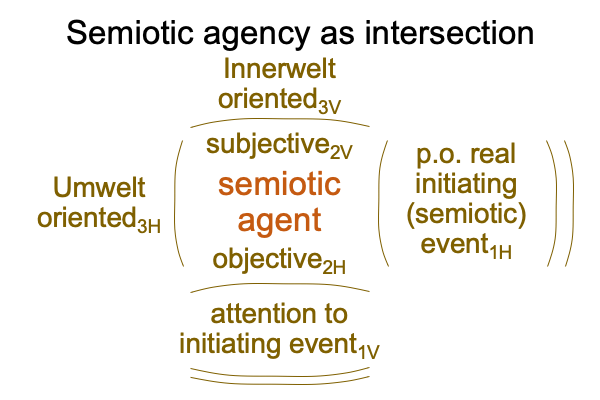
0752 Remember, the author discusses non-human, or rather, brainless organisms and ends up with an alluring line for appreciating the evolution of meaning in the universe.
My thanks to the author for the fishing expedition. What a wonderful cast.

